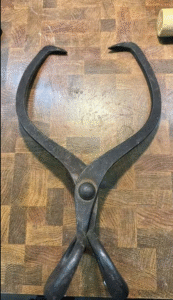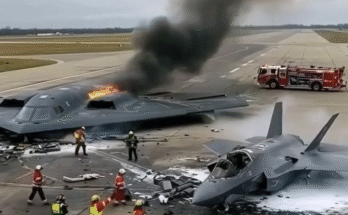An Overlooked Piece of History
History is often presented as a neat timeline of grand events: wars, revolutions, inventions, and the rise and fall of nations. We are taught about kings and queens, presidents and generals, towering monuments and famous battles. Yet for every moment that is etched into textbooks, countless others remain hidden in the shadows—stories of people, places, and struggles that shaped the world in quieter but no less significant ways. These are the overlooked pieces of history, the threads left behind when the grand tapestry is woven.
When we pause to look at these forgotten corners, we discover truths that challenge our understanding of the past. They remind us that history is not just what makes headlines or inspires statues—it is also lived in the small, uncelebrated actions of ordinary people.
Why History Overlooks
The very nature of history is selective. Chroniclers of the past were often men of power, writing from palaces or pulpits. Their records favored rulers and victories, not commoners or defeats. Stories of women, laborers, slaves, indigenous peoples, and minorities were pushed aside, if not erased altogether.
Even today, modern history books tend to emphasize what fits neatly into narratives of progress or national pride. That which complicates or challenges the official story is left behind. As a result, entire communities and episodes have been brushed into obscurity.
Examples of Forgotten Histories
Take, for example, the story of the Tulsa Race Massacre of 1921. For decades, one of the most violent racial attacks in American history was absent from mainstream teaching. An entire community known as “Black Wall Street”—a prosperous African American neighborhood—was burned to the ground by white mobs. Hundreds died, thousands lost their homes, yet it was rarely mentioned in classrooms until recent years. This silence wasn’t accidental; it was deliberate, a collective decision to downplay racial violence that contradicted the nation’s self-image.
Or consider the women codebreakers of World War II. While Alan Turing’s genius at Bletchley Park is rightly celebrated, thousands of women worked tirelessly in secret to break enemy codes, sift through intelligence, and support operations that shortened the war. Their contributions were vital, but for decades they remained unsung, bound by secrecy and overshadowed by the men whose names history recorded.
Another example lies in the stories of indigenous resistance across the world. From the Mapuche in Chile to the Ainu in Japan, countless native groups fought against colonization with remarkable resilience. Yet their struggles are rarely told from their perspective. Instead, official records frame them as obstacles to progress rather than as communities defending their way of life.
The Consequences of Forgetting
When pieces of history are overlooked, entire societies lose perspective. Forgetting distorts identity—it allows nations to tell themselves comfortable stories while avoiding uncomfortable truths.
The absence of certain narratives also robs marginalized groups of recognition. For descendants of those who suffered, silence can feel like erasure. Imagine growing up in a community that endured tragedy, only to find no mention of it in the wider world. It is as though your ancestors’ experiences never mattered.
Forgetting also has practical consequences. When we ignore past injustices, we risk repeating them. When we fail to remember small innovations, we miss opportunities to learn from them. History is not only about remembering who we were—it’s also about guiding who we can become.
The Power of Rediscovery
Yet overlooked pieces of history are not lost forever. Researchers, archivists, and storytellers are unearthing forgotten truths every day. Oral histories passed down within families are being recorded and preserved. Communities are reclaiming their pasts, insisting that their stories matter.
The rediscovery of the Tulsa Massacre, for instance, has sparked national conversations about racial injustice and reparations. Similarly, the recognition of women’s hidden contributions in science and war has inspired new generations to challenge stereotypes about gender and capability.
Even archaeology contributes to this rediscovery. From unearthed artifacts of forgotten civilizations to long-lost manuscripts found in monastery vaults, history is constantly being revised as new pieces emerge. Each discovery reminds us that history is not fixed—it is alive, growing, and evolving as we look more closely.
Ordinary Lives, Extraordinary Value
Perhaps the most overlooked piece of history is the everyday life of ordinary people. For centuries, historians dismissed diaries, letters, and folk traditions as trivial. Yet these sources reveal the textures of human experience that great battles and treaties cannot capture.
What did peasants eat in medieval Europe? How did enslaved people secretly maintain culture under the yoke of bondage? What jokes did soldiers tell each other in the trenches to cope with fear? These details matter. They remind us that history is not just made by leaders, but by communities, families, and individuals whose choices—however small—shaped the course of time.
Learning from What We Overlook
By paying attention to overlooked history, we gain a richer, more honest view of humanity. We begin to see that progress has never been a straight line. It has been messy, full of contradictions, resilience, and forgotten victories.
More importantly, rediscovering overlooked stories cultivates empathy. When we hear the voices of those who were silenced, we expand our understanding of what it means to be human. We recognize struggles that echo into our present: the fight for equality, the courage of dissent, the persistence of cultural identity against all odds.
A Call to Remember
The overlooked pieces of history call out to us with urgency. They remind us that every generation has a responsibility not only to make history but to preserve it fairly. Teachers, writers, filmmakers, and ordinary citizens all have a role to play in lifting forgotten voices into the light.
It might begin with asking deeper questions: What stories are missing from my country’s past? Whose contributions were ignored? What lies beneath the official version of events?
It might mean reading memoirs, supporting local museums, or recording the stories of elders before they vanish. Sometimes history isn’t found in dusty archives but in the memories of those who lived through times that textbooks ignore.
Conclusion
“An overlooked piece of history” is more than just an academic idea—it is a call to widen our lens. The overlooked is where we find the silenced voices, the hidden struggles, and the small acts of courage that kept humanity moving forward when no spotlight was shining.
To honor history is not simply to celebrate triumphs; it is to confront pain, to recover what was forgotten, and to acknowledge that the world we inherit was built by many hands—most of whom will never appear in the headlines.
Perhaps the most important lesson is this: history is not finished. It is a living story, and by seeking out its overlooked pieces, we are not only remembering the past but reshaping the future.


